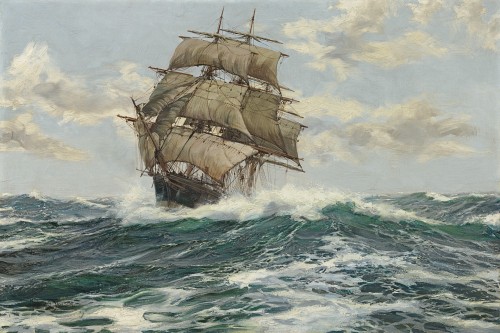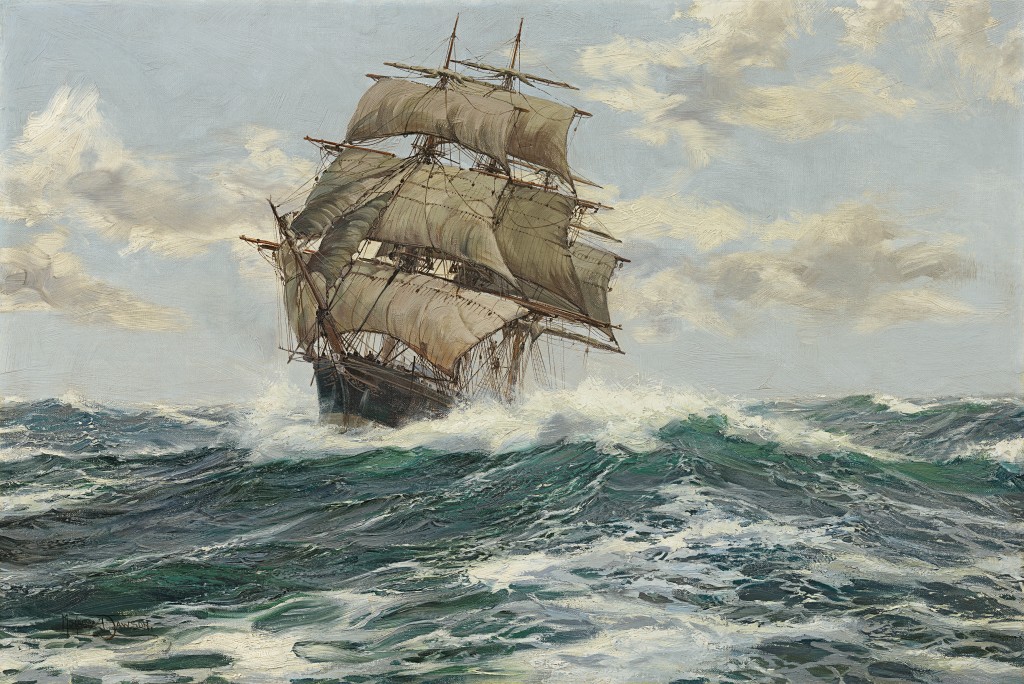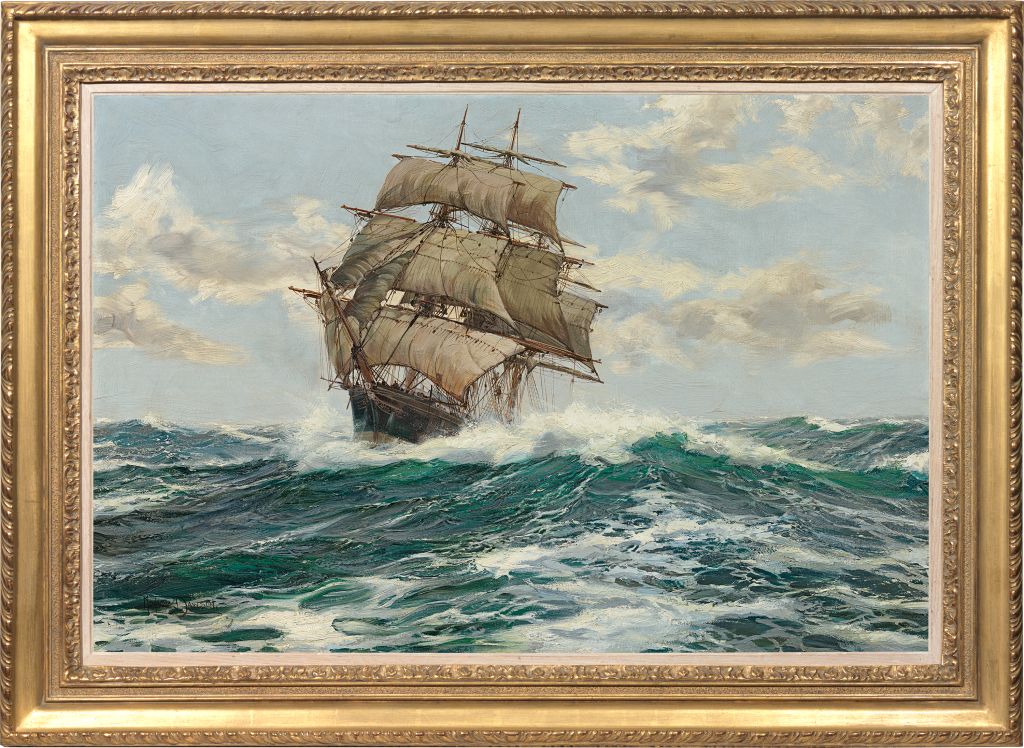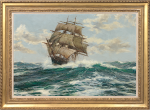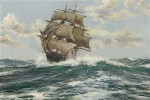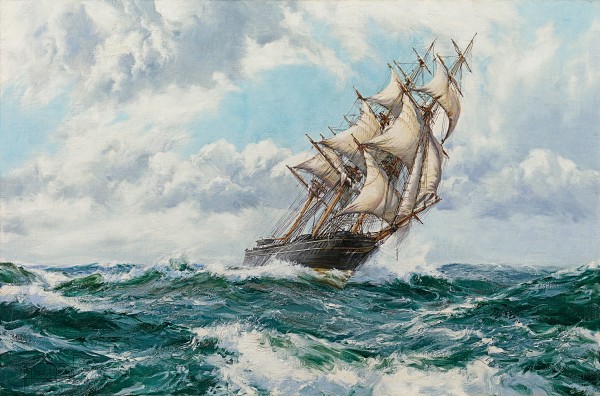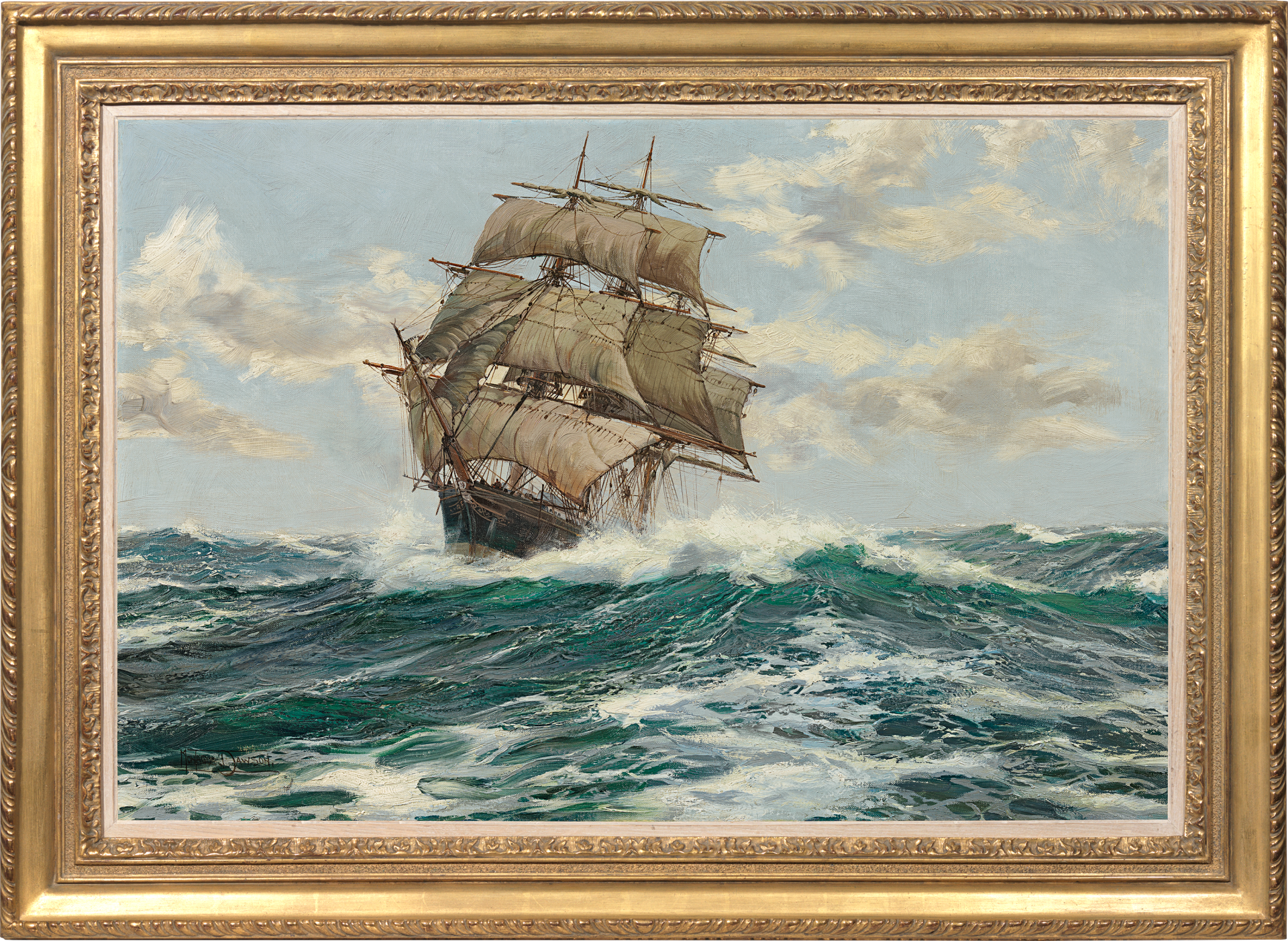MONTAGUE DAWSON RSMA, FRSA
Chiswick 1895 - 1973 Midhurst, Sussex
Ref: CC 175
Running before the wind
Signed lower left: MONTAGUE DAWSON
Oil on canvas: 20 x 30 in / 50.8 x 76.2 cm
Frame size: 26 x 36 in / 66 x 91.4 cm
Painted circa 1950
Provenance:
Watson Art Galleries, Montreal, inv. no.2976;
private collection, Montreal;
by descent to a private collection, Toronto
‘His brushwork, though free, is never careless and his colours are graded with discipline and restraint. This all contributes to the feeling of spaciousness and harmony which is the mark of a Montague Dawson seascape … He remains a force in English marine painting, as fresh and vigorous as his own crisp skies and driving seas.’[1]
Among Montague Dawson’s finest works are his paintings of clipper ships, which dominated the seas from the 1840s to the 1890s and became potent icons of the age of sail. ‘Tall, elegant and twice as fast as any merchant ships before them, they were long and lean with sharp bows, raked masts and a great cumulus of sail’[2]. Clippers were developed by a brilliant handful of ship designers in America in the 1840s, for the New York to China tea trade. Speed was of the essence to bring the freshest tea, which commanded a premium, back to the USA. Around the same time, US Navy Lieutenant Matthew Fountain Maury’s Wind and Current Charts (1847), which scientifically assessed the best sailing directions, enabled Captains to shave weeks off the time of voyages.
With the California Gold Rush from 1848, larger (‘extreme’) clippers were built to round Cape Horn, carrying prospectors and goods from the eastern USA to the gold fields. British ship designers entered the race to build the finest ships from the 1850s. British clippers took emigrants to Australia for her 1850s Gold Rush and in the 1880s brought home cargoes of wool for the London auctions. By the mid-1890s, clippers were being superseded by larger, steel-built windjammers and by steamers, which could now cut their route eastwards through the Suez Canal.
Clippers in their prime could reach twenty-one knots and sail 400 miles in a single day. In this painting, Dawson captures the exhilaration and heroism of the clipper’s lonely battle against the elements.
Montague Dawson was the son of a keen yachtsman and the grandson of the marine painter Henry Dawson (1811-1878). Much of his childhood was spent on Southampton Water where he was able to indulge his interest in the study of ships. For a brief period around 1910 Dawson worked for a commercial art studio in London, but with the outbreak of the First World War he joined the Royal Navy. Whilst serving with the Navy in Falmouth he met Charles Napier Hemy (1841-1917), who considerably influenced his work. Dawson was present at the final surrender of the German Grand Fleet and many of his illustrations depicting the event were published in the Sphere.
After the War, Dawson established himself as a professional marine artist, concentrating on historical subjects and portraits of deep-water sailing ships often in stiff breeze or on high seas. During the Second World War, he was employed as a war artist and again worked for the Sphere. Dawson exhibited regularly at the Royal Society of Marine Artists, of which he became a member, from 1946 to 1964, and occasionally at the Royal Academy between 1917 and 1936. By the 1930s he was considered one of the greatest living marine artists, whose patrons included two American Presidents, Dwight D Eisenhower and Lyndon B Johnson, as well as the British Royal Family.
The work of Montague Dawson is represented in the National Maritime Museum, Greenwich and the Royal Naval Museum, Portsmouth.
[1] LGG Ramsey, Montague Dawson R.S.M.A., F.R.S.A., Leigh-on-Sea 1967, p.16.
[2] Ron Ranson, The Maritime Paintings of Montague Dawson, Newton Abbot 1993, p.24.

